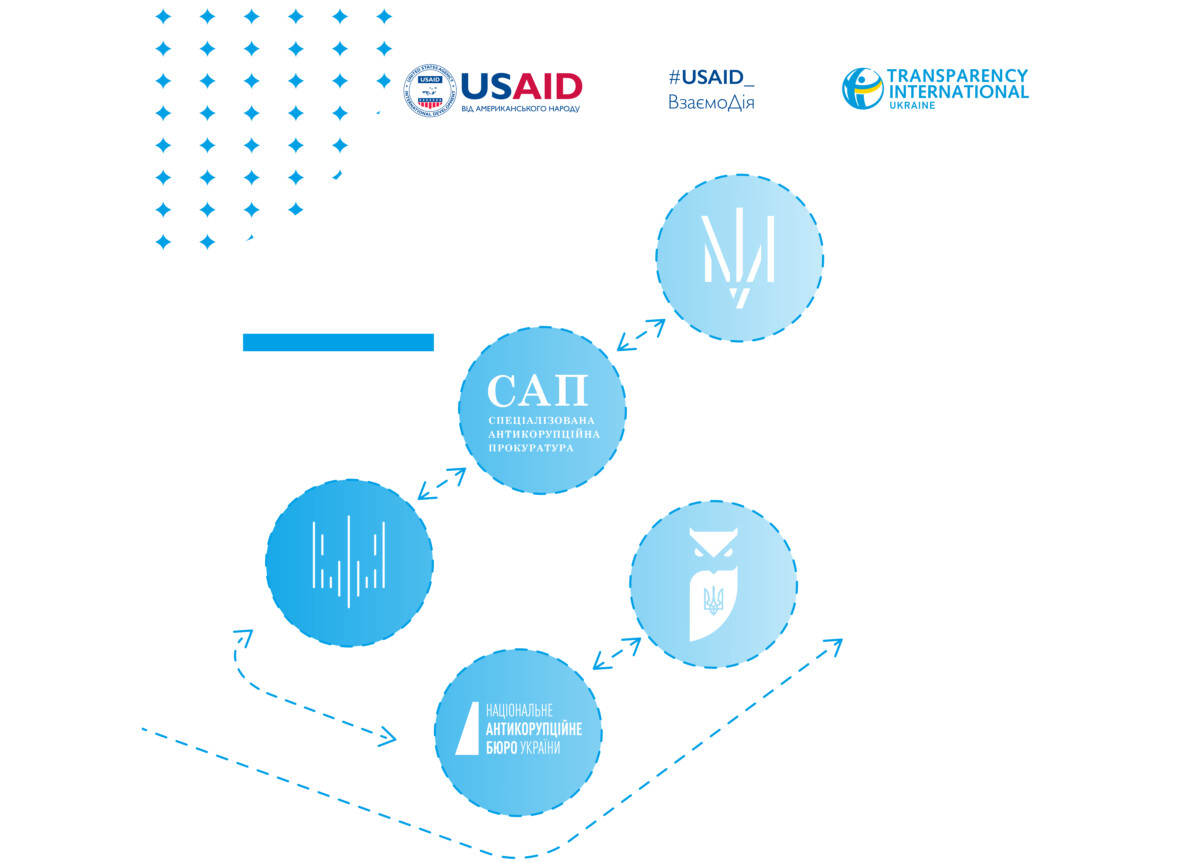

Transparency International Ukraine presents its first study of the capacity, management and interaction of anti-corruption infrastructure.
The research methodology has been developed on the basis of, and taking into account, the main approaches and methodology of the National Integrity Systems (NIS), developed and implemented by the international anti-corruption network Transparency International. The NIS encompasses the entire system of governmental and non-governmental “pillars”: legislative, executive, and judicial agencies; public sector; law enforcement agencies; the media; political parties; anti-corruption agencies; institutions responsible for audit and elections; the Ombudsman, business, and civil society.
When all “pillars” in the NIS function adequately, corruption remains under control. If all or some of them are unstable, they can let corruption thrive and harm the society.
TI Ukraine conducted a big NIS study back in 2011. Considering TI Ukraine’s focus and Strategy 2019–2021, this research covers only the agencies of Ukraine’s anti-corruption infrastructure.
The purpose of the study is to provide a comprehensive assessment of the institutional capacity and management of the main anti-corruption bodies of Ukraine, which include:
– The National Agency on Corruption Prevention (NACP) — central body of executive power with a special status which ensures the development and implementation of the national anti-corruption policy;
– The National Anti-Corruption Bureau of Ukraine (NABU) — law enforcement agency responsible for the investigation and detection of corruption offenses;
– Specialized Anti-Corruption Prosecutor’s Office (SAPO) — independent structural unit of the Prosecutor General’s Office;
– National Agency of Ukraine for finding, tracing and management of assets derived from corruption and other crimes (ARMA);
– The High Anti-Corruption Court (HACC).
The assessment of anti-corruption infrastructure agencies reflects the legal framework and actual performance of the institutions that make up this infrastructure. This helps to avoid any gap between the legal framework and the actual possible practice in the assessment.
Researchers wanted to find out how anti-corruption agencies interact in practice within the anti-corruption infrastructure and beyond. The research methodology focuses not only on individual institutions, but also on the relationships among them and with other agencies, as well as enables analyzing the context in which these agencies function.
The study covers the period from January 2015 to August 1, 2020.
You can read a short version of the study below.
You can access the full version of the study on the Ukrainian version of the site.




 Download .
Download .

